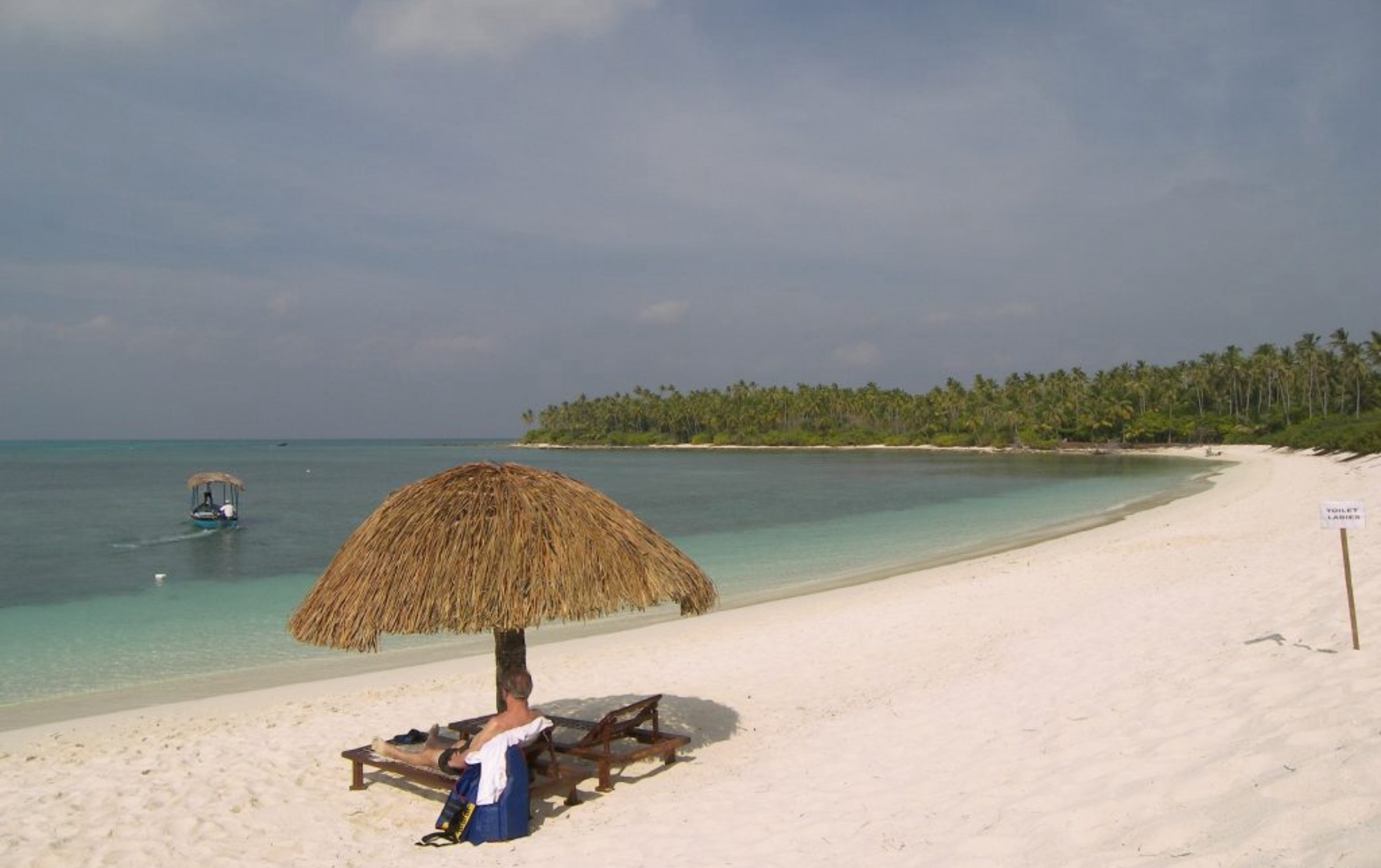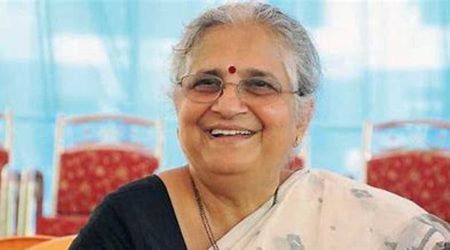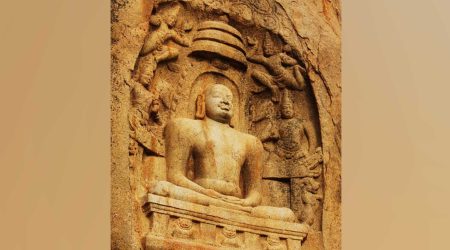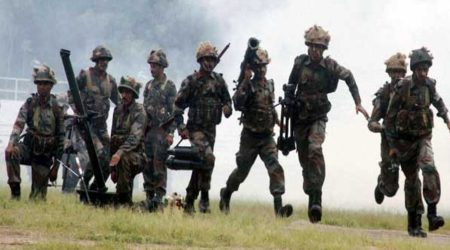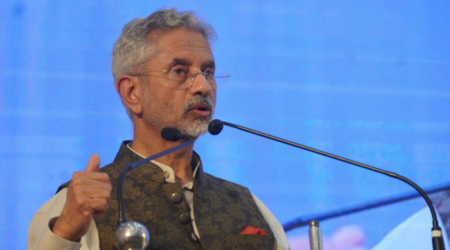India’s smallest Union Territory Lakshadweep is an archipelago consisting of 36 islands with an area of 32 sq km. It is a uni-district Union Territory and comprises 12 atolls, three reefs, five submerged banks and ten inhabited islands.
The name Lakshadweep in Malayalam and Sanskrit means ‘a hundred thousand islands’.
The capital of Lakshadweep is Kavaratti and it is also the principal town of the UT. All these Islands are 220 to 440 km away from the coastal city of Kochi in Kerala, in the emerald Arabian Sea. The natural landscapes, the sandy beaches, abundance of flora and fauna and the absence of a rushed lifestyle enhance the mystique of Lakshadweep.



Here are few of the must visit islands of Lakshadweep:
Bangaram
Bangaram is a tiny teardrop shaped island, which lies very close to Agatti and Kavaratti. Two small islands of Thinnakara and Parali also lie close to Bangaram enclosed by the same lagoon. During the night, phosphorescent plankton washed ashore on the coral sands impart a bluish glow to the beach, which is totally enchanting.
Agatti
Agatti has one of the most beautiful lagoons in Lakshadweep. The airport is built on this island. From the aircraft, as one approaches for a landing, one gets a breath-taking view of the airstrip on the island.
Agatti is the virtual gateway to the islands. A 20-bed tourist complex with all modern amenities has been set up here. Indian Airlines operate flights to Agatti, making it one of the most accessible islands in Lakshadweep.
Kadmath
Kadmat is 8 km long and only 550 meters wide at its broadest point. In addition to the beautiful shallow lagoon on the west, which is ideal for water sports, there is a narrow lagoon on the east. The main attractions are the long sandy beaches and sand banks on the southern tip. Tourist huts built amidst palm groves facing the lagoon allow to soak in the pristine beauty of the ecosystem. Kayaks, sailing boats, pedal boats, skiing boats and glass-bottomed boats are available on hire.
Kadmat has emerged as one of the most beautiful dive centers in India. Variety of fishes like rays, sharks, and clear water with 20-50 meter visibility makes it an unparalleled dive destination for scuba divers. Non Indians are also permitted to visit this island.
Minicoy
Minicoy is, in a sense, isolated from the main group of islands and lies about 200 kms south of the northern group. It is 10.6 kms long and is the second largest island after Andrott. Minicoy has one of the largest lagoons with a small uninhabited islet Viringili on its southern side.
Minicoy is distinct from the northern group of islands in its culture, language, dress, etc. It has a cluster of 11 villages, which are called “Ava’h” each presided over by an elected village elder called Bodukaka.
Minicoy is renowned for its traditional dance – the Lava performed on festive occasions. Colorful race boats called “Jahadhoni” are a feast to the eye of any tourist.
Kalpeni
Kalpeni along with two small islets of Tilakkam and Pitti and the uninhabited island of Cheriyam in the north form a single atoll. A peculiar feature of Kalpeni is a huge storm bank of coral debris along its eastern and southeastern shorelines.
It is believed that a violent storm in 1847 threw up huge coral boulders along these shores. One can swim, snorkel or reef-walk in the vast lagoon and indulge in water sports on kayaks, sailboats and pedal boats.
Kavaratti
Kavaratti is the Headquarters of the Administration and the most developed island. Fifty-two mosques are spread out over the island, the most beautiful being the Ujra mosque. Water from a well near the mosque is believed to have curative powers.
The beautiful and calm lagoon offers an ideal spot for water sports, swimming and snorkeling.
——————————
India’s beach holiday alternative to Maldives

The problem for common tourists in Lakshadweep was that entry to the islands was restricted. One requires an entry permit issued by Lakshadweep Administration to visit these islands.
Lakshadweep, known for its stunning beaches, has struggled as a tourism destination thanks to cumbersome procedures to obtain entry permits and poor air connectivity.
Previously, travelers had to go through a time-consuming offline process to pay a fee of less than $3 for e-permits. While the application process for e-permits is now online, the limited number of flights and sub-standard accommodation facilities have played spoilsport with the islands’ tourist arrivals.
However, all these things are going to change, and the Centre’s new initiatives to boost Lakshadweep’s infrastructure are likely to give a shot in the arm to the region’s tourism industry.
Here’s how the Lakshadweep administration is trying to make the islands a tourism hotspot.
Introduction of e permits:
The administration has simplified the entry permit process for island travel by introducing digital e-permits. Previously, obtaining a permit involved bank payment and paperwork, but now tourists can easily apply online and receive their e-permits within a day or two, making the process much more convenient.
Improving air connectivity:
Alliance Air’s flights, the sole airline operating in the region, are sold out until March, reflecting the poor state of air connectivity to the islands. Currently, Alliance Air operates a 70-seater turboprop ATR-72 daily to Lakshadweep and in comparison, there are about 60 weekly flights to the Maldives from various Indian cities. However, the airline is now considering increasing its fleet.
Promoting Lakshadweep Tourism
EaseMyTrip has introduced Lakshadweep as a premier destination, on par with international favourites, and plans to ally with Lakshadweep Tourism soon to promote the destination.


